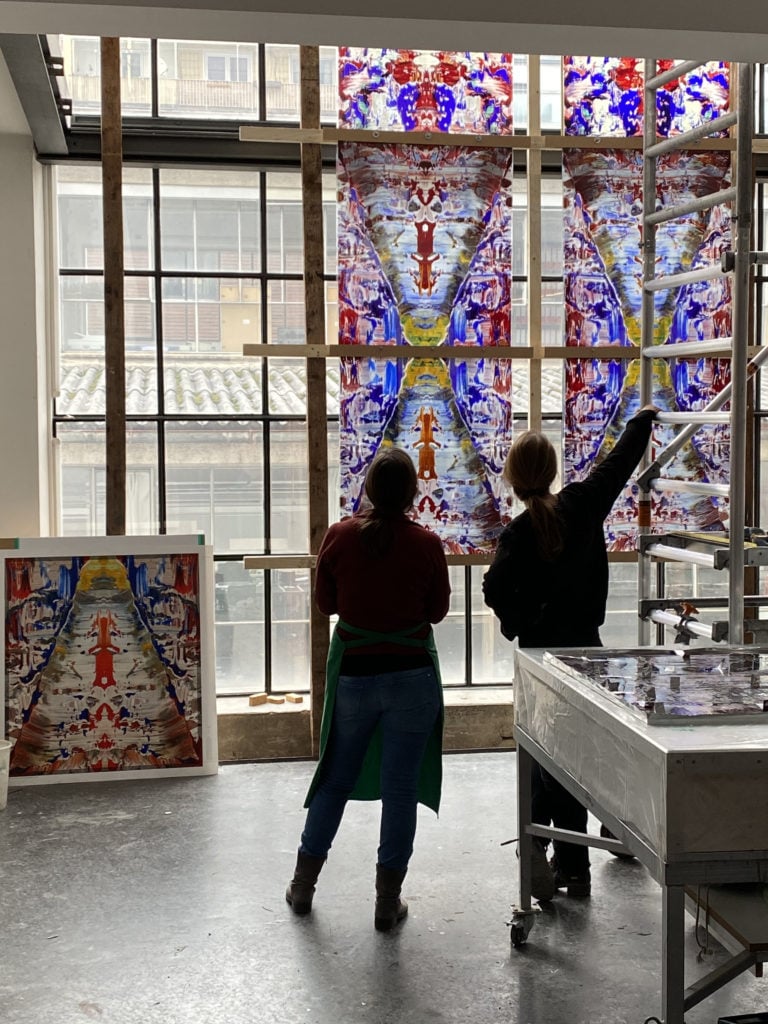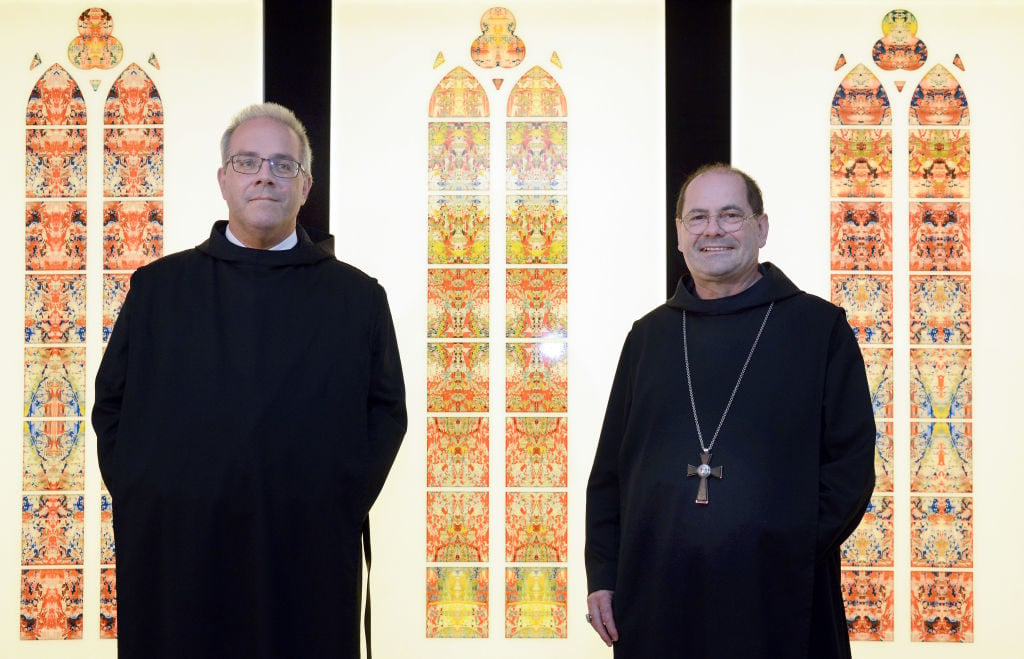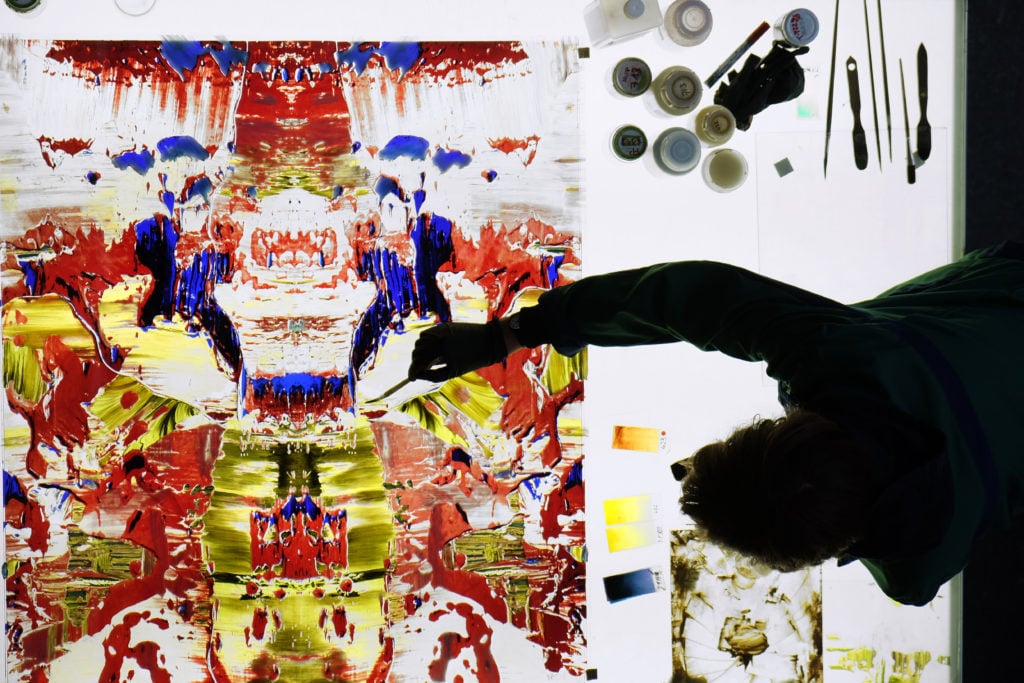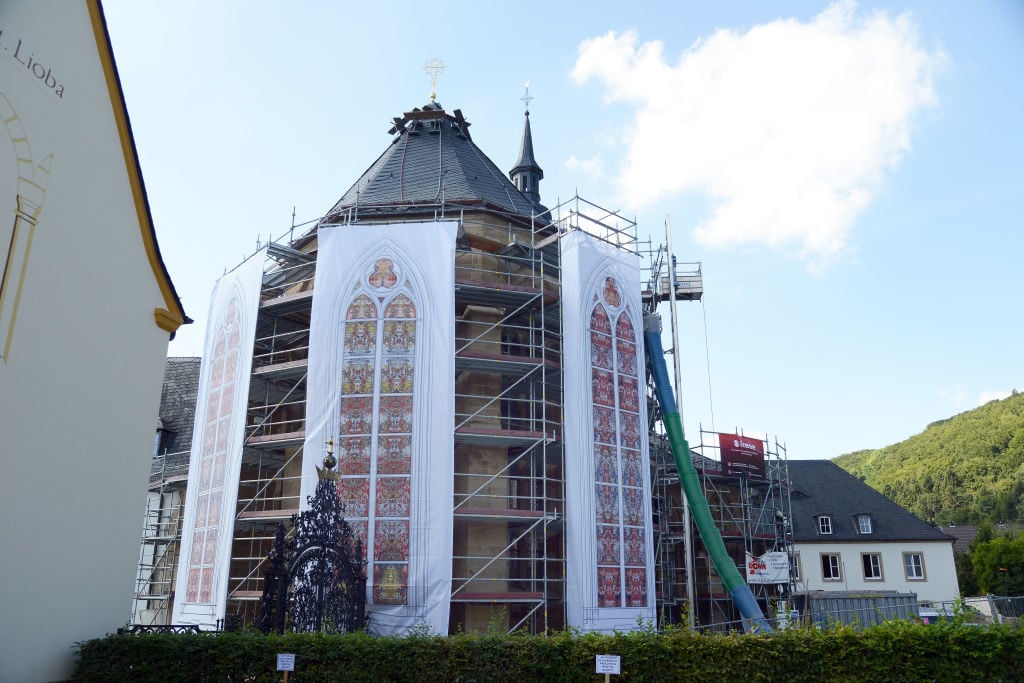Art World
Rural German Monks Hope Their Abbey’s New Gerhard Richter-Designed Stained Glass Windows Will Help Convert Art Lovers to the Church
The monks are bracing for an influx of tourism.

The monks are bracing for an influx of tourism.

The contemplative life of the Benedictine monks from Germany’s Tholey Abbey is about to be interrupted by the jet-setting art world. This September, three stained glass windows designed by German artist Gerhard Richter will adorn their sixth-century place of worship in the small western town of Tholey.
The art star’s new project is sure to replace the monastery’s relative quiet with swarms of curious art pilgrims seeking out the newest public work by one of the nation’s greatest artistic prides. Between prayers, the monastery members are already discussing the issue of too few parking spaces. To handle that and other tasks associated with being newly “on the map,” the monks have set up a foundation to handle its long to-do list.
One of Richter’s windows was presented to the public last weekend at an open studio event at the Gustav van Treeck glass workshops in Munich. The intricate designs, inspired by an earlier abstract painting series, exude kaleidoscopic psychedelia countered by a sense of meditative calm and exacting precision.

Abbot Mauritius Chorio, at right, and Wendelinus Naumann present the window designs of the artist Gerhard Richter at the Benedictine Monastery in Tholey, Saarland. Photo: Harald Tittel/picture alliance via Getty Images.
This is not Richter’s first stained glass window installed in a German church. In his current home city of Cologne, Richter’s south-facing window stands among the classic stained panels of the Cologne Dome, which sits on a square across from the bustling central station. The original 13th-century window had been blown out during World War II. At any time of day, a cluster of visitors gazes up at the hyper-modernist, abstract wonder as its little cubes of light dance across the floor.
But Tholey, located in the sleepy southern state of Saarland, is a very different kind of place. Richter’s church installation there—much more complicated than his previous one in Cologne—will almost certainly upend the way of life for the small town’s 12,000 residents.In the first year, 100,000 guests are expected to visit, according to DPA (the German Associated Press).
The abbey hopes to bring people back to the faith through the buzz of the new, the transcendence of light, and the draw of Gerhard Richter’s godlike status in Germany.

Glass painting on Richter’s windows by Gustav van Treeck. © Gustav van Treeck GmbH, München.
“The hopefully great popularity of the project we want to achieve in accordance with our monastic, rather reclusive lives,” read a statement from the abbey in February. To that end, the monastery has established an operating company and a tourist center that will handle the influx of visitors, called the Tholey Abbey Foundation. It will be the link, or barrier, between the public and the most pious corners of the monastery, in which 13 monks reside and work. It will also handle the training of visitor guides, tours, and marketing.
The monastery spokespeople say that they hope the renewed interest in the abbey will give a renewed sense of faith to its visitors. “The gift from Gerhard Richter naturally plays a central role in this,” says Thorsten Klein, founding director of the Tholey Abbey Foundation. “The task will be to share the art of the most important living artist in the world with the Church in order to, together, engage tourism.”

Flags show the window designs of Gerhard Richter. Photo: Harald Tittel/picture alliance via Getty Images.
The three windows, which are 30 feet tall, are inspired by Richter’s 1990 abstract series (which was reworked again in 2009). It’s part of a large renovation, and both that and the commissioning of the windows is being supported by Meiser, an industrial stair and grating company also based in Saarland. Renovations include a refacing of some of the walls and better lighting systems. “Brightness and friendliness were our goal,” brother Wendelinus told the local paper Saarbrücker Zeitung.
Each window has five different motifs that are vertically and horizontally mirrored in a painstaking process involving digital imaging and careful handiwork. The artworks on the windows are inspired by Abstract Painting from 1990, listed 724-4 in the artist’s catalogue raisonné. The oil on canvas, which sold at Christie’s for £769,600 ($1.3 million) in 2006, became an inspiration for several mirrored paintings from 2009, including the works Yusuf, Musa, as well as Abdu. The glass experts met with the artist in his Cologne studio on multiple occasions to discuss the complex process.

An employee of Gustav van Treeck painting the Richter windows. © Gustav van Treeck GmbH, München.
“Unlike the Cologne windows, Gerhard Richter presents us with playful, detailed, and colorful designs for Tholey as well as big design and technical challenges,” says artistic director and managing director Katja Zukic. “We have to get the images onto the glass in an optimal way. Using digital image processing supports our traditional craftsmanship.” To achieve the nuances of Richter’s layered oil, the glassworkers must also layer colored glasses rather than simply applying colors on top of each other.
“Staining glass is a unique and living process,” she adds.
For now, Richter, who is, for the record, agnostic, seems pleased with the work of the Munich workshop: “I am very surprised how well you have been able to transform my design into the huge dimensions of the windows,” the workshop quoted him saying in a press release. “You have mastered the complexity of a small model so expertly in stained glass.” He added that he looks forward to seeing how well it works installed in Tholey.
There are another 34 new stained glass windows in the works for Tholey Abbey based on designs by Afghanistan-born, Munich-based artist Mahbuba Elham Maqsoodi which will be more figurative in nature.